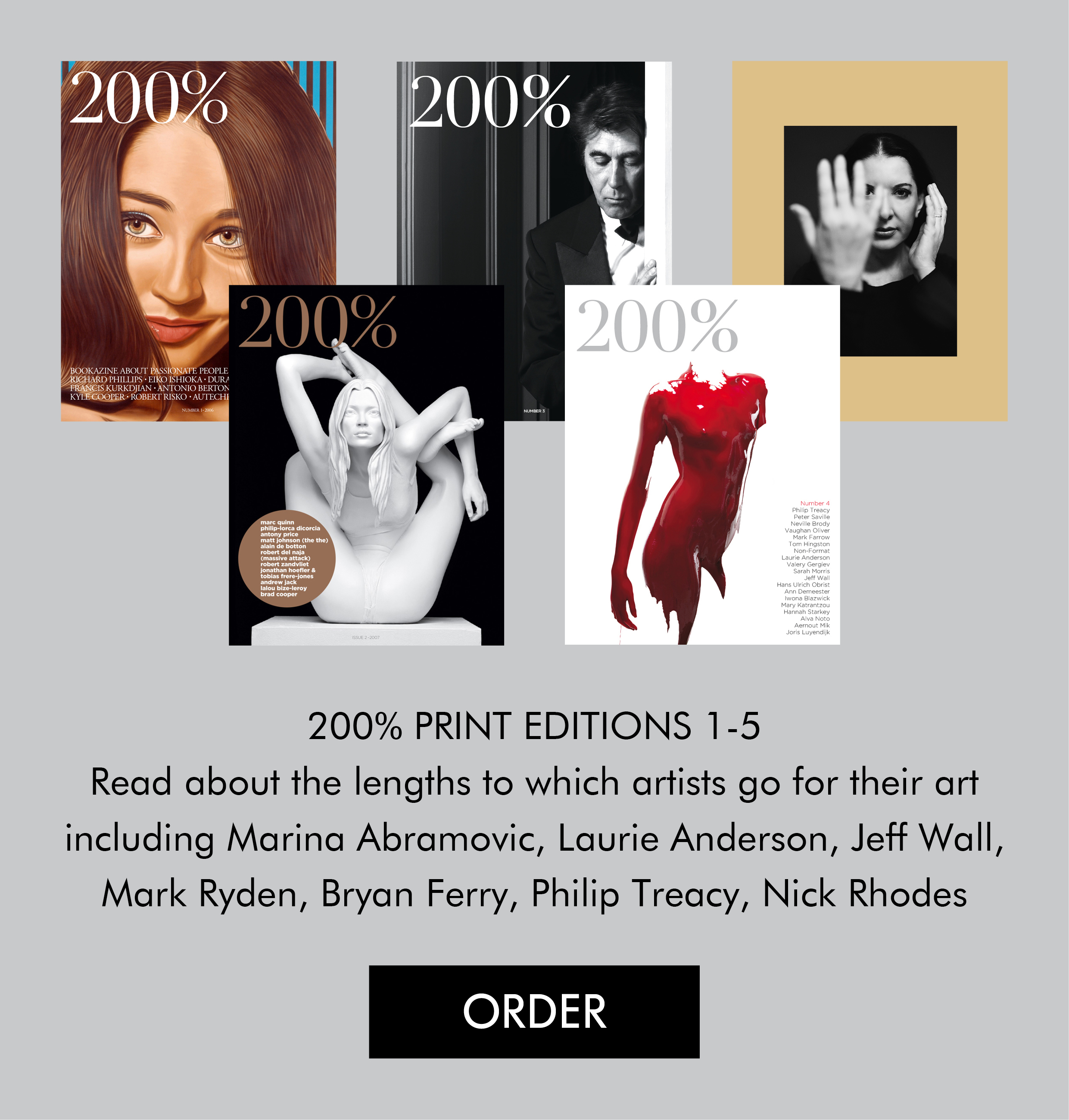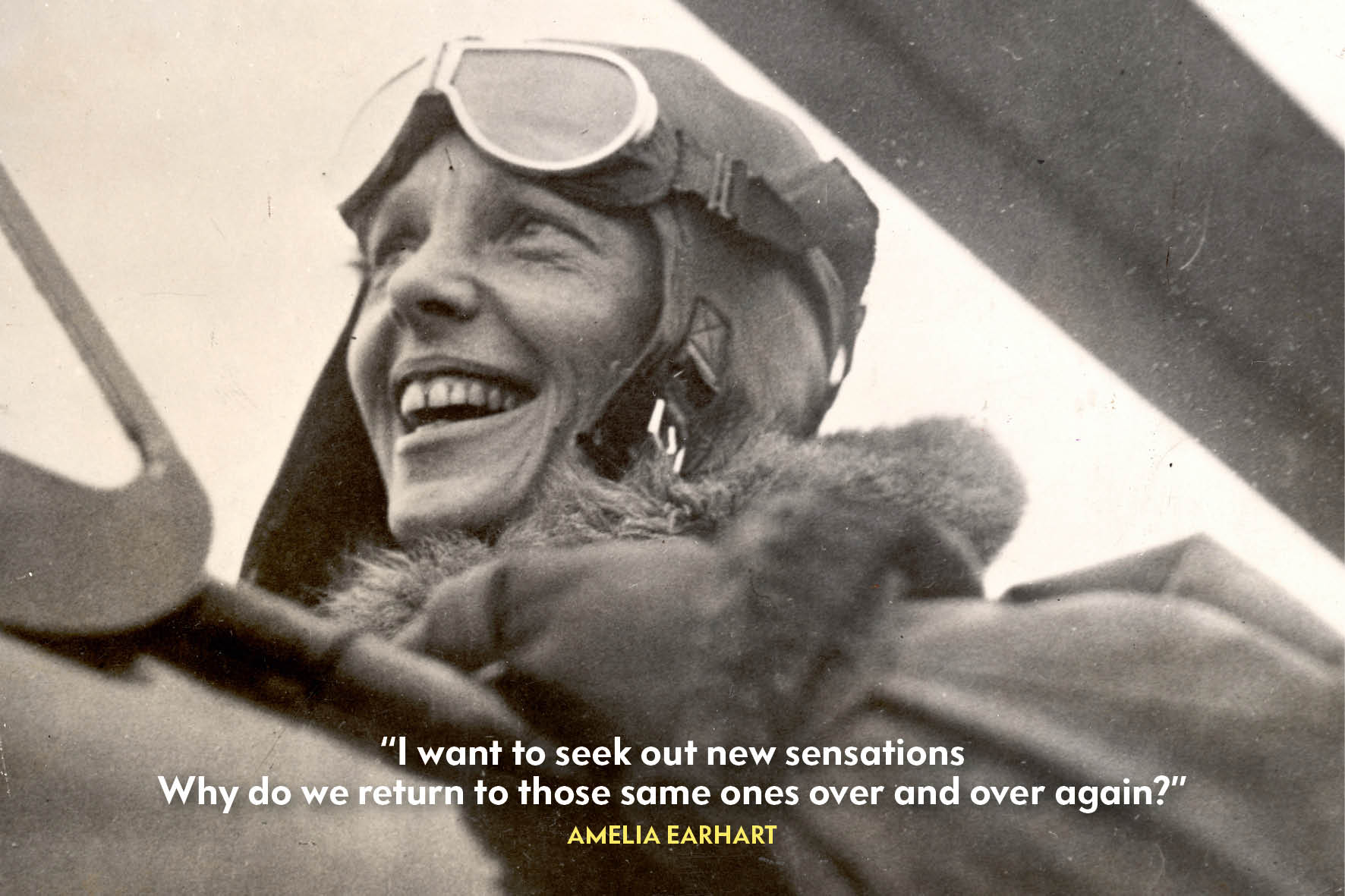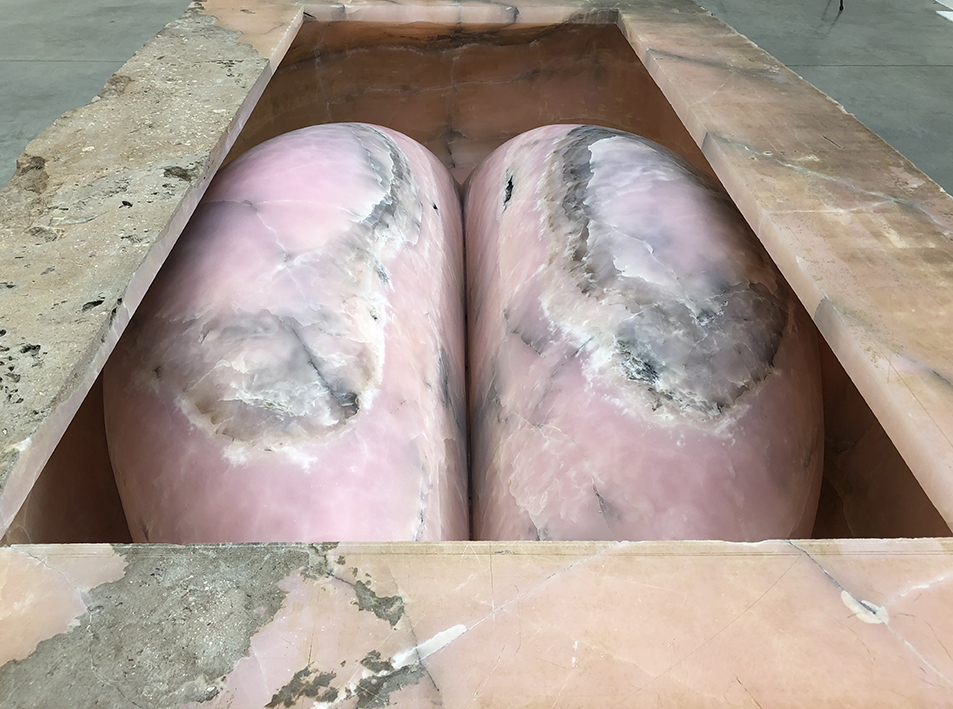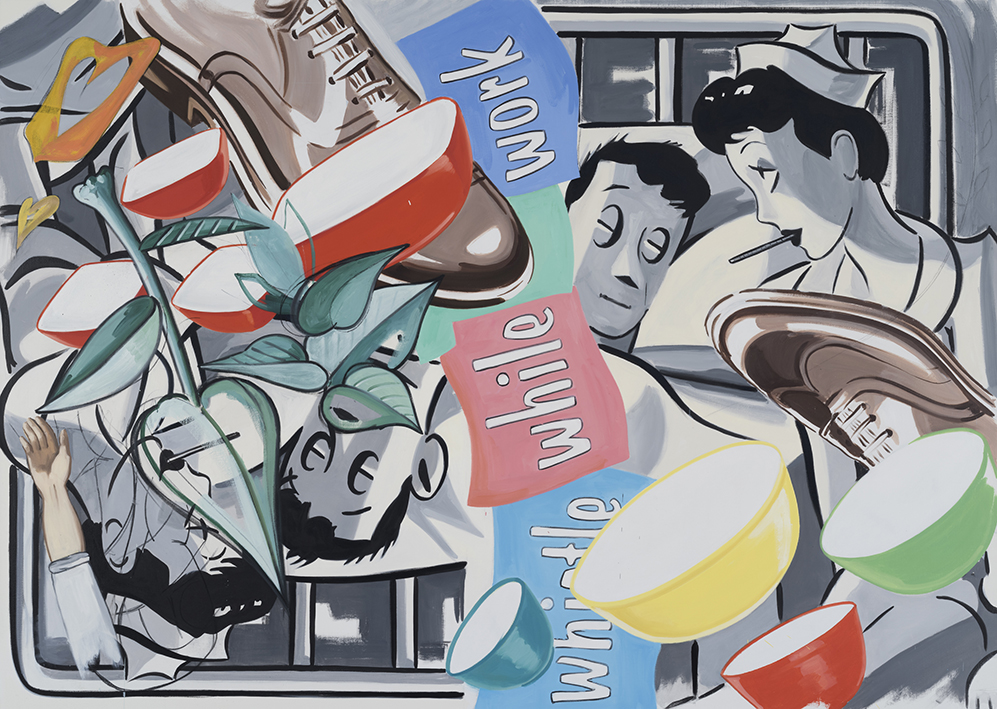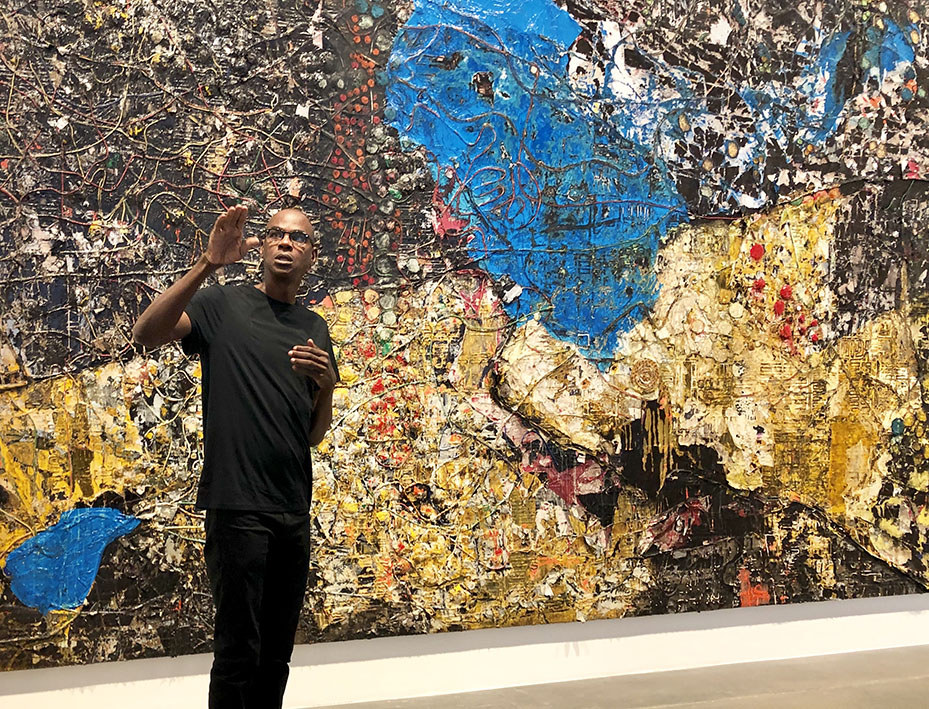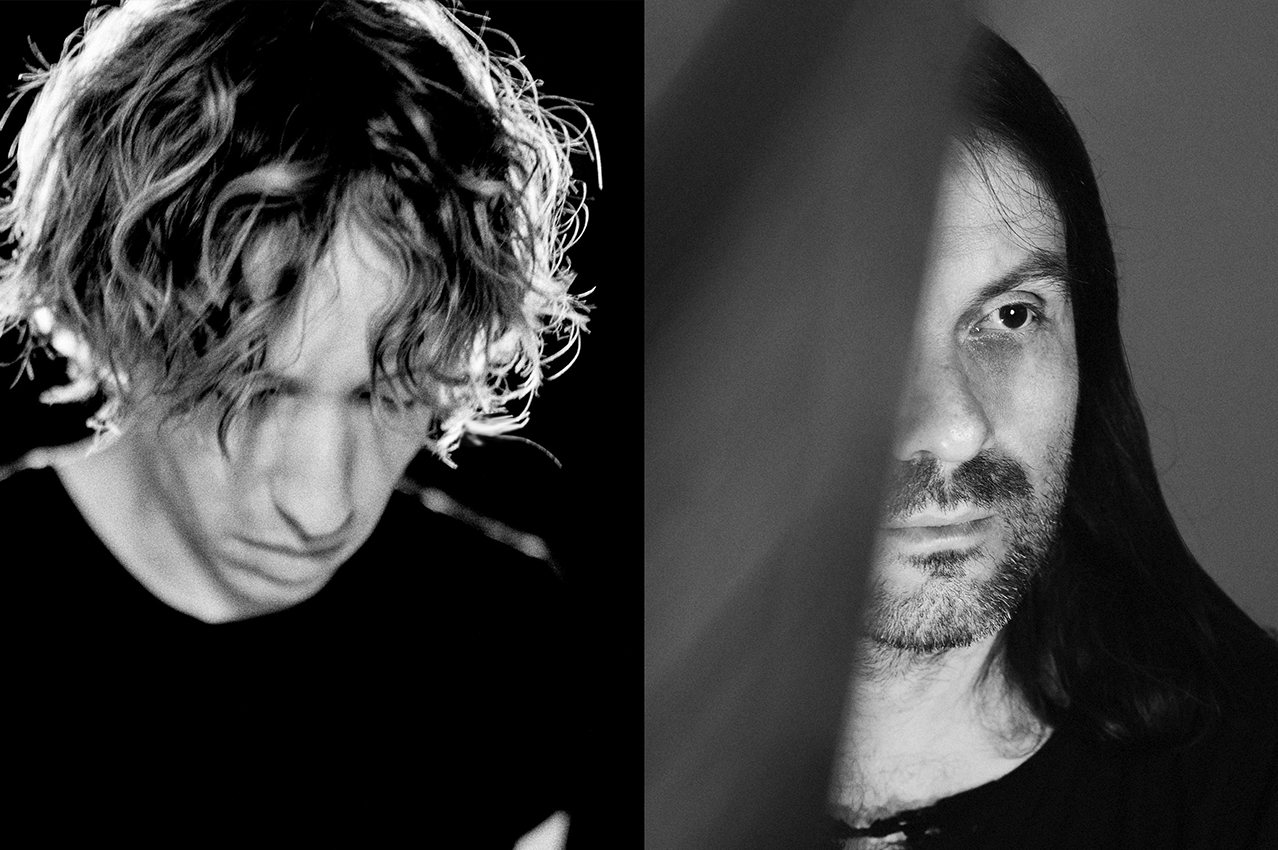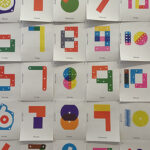 “Mismatch Is the New Black” sounds more newsworthy and exciting than “White Is the New Black”, does it not? In five consecutive collections at London Fashion week, the fashion designer Michael van der Ham has showcased his talent for mismatching fabrics and colours in his adventurous designs. The collections of the Dutch born designer, who graduated from the MA fashion course at Central Saint Martins, are not only picked up ‘eagerly’ by fashion magazine editors, but also by avant-gardistic tastemakers, including Björk, for whom he designed the garments for her critically acclaimed ‘Biophilia’ tour. 200% spoke with Van der Ham on the eve of the presentation of his Autumn / Winter 2012 collection.
200%: For the ‘Biophilia’ tour you designed for Björk a bespoke asymmetrical blue velvet and brocade garment, and a shorter dress in patchworked gold lamé and lace. Did she wear your designs before the ‘Biophilia’ tour and did she have any input or requests for the garments?
Michael van der Ham: She wore a lot of existing dresses before that and we met a couple of times before when she asked to wear dresses for dinners. She came to my showroom on another occasion when I knew she was working on the ‘Biophilia’ tour and new album at the time, so I simply offered to make her some special dresses, specifically for the project. I know she wants to wear things that are related to theecstatic of the album, so she sent me tons of interesting research material of images, moods and references. I worked on fabrics and shapes that would suit it all, it was so much fun to work on the project; except for the colours, she just let me just get on with it.
200%: The (fashion) audience is easily bored and wants to see new things. How do you deal with this pressure as a designer?
MvdH: It is definitely hard. Editors and reviewers want cutting edge: something new every season. The buyers, though, want your signature styles and not too much change. I like to try different silhouettes, materials and sometimes it works out great and sometimes it doesn’t. Interestingly, every season, without fail: which ever piece that receives the most attention from people on the day of the show, I don’t sell a lot of it.
200%: Do you worry that your creativity may be compromised by the pressure of delivering a saleable collection?
MvdH: No because you can do both: commercial pieces and creative pieces, not to say commercial pieces can’t be creative also. You can do two different versions: a sales and a show version, it’s great.
200%: Does the reception that your collections receive, influence you as a designer in the steps to be taken for the next collection?
MvdH: Well, yes in a way that if a particular type of cut or item doesn’t sell you definitely don’t repeat it again. I don’t give it that much thought, though, as I do what I feel is relevant at that particular time.
200%: Could you explain how important is wearability for you as a designer?
MvdH: Not necessarily, some of the show pieces aren’t that practical but they still sell.
200%: Are you good in sketching your fashion designs? How important is drawing to you?
MvdH: I’m actually not that good at drawing. I research a lot and have shapes I like cut by my pattern cutter and then I work by altering the toiles. A major starting point is also fabrication: I love sourcing rare and special fabrics or designing my own. I also work a lot with paper photo collages that I have cut.
200%: Was there any advice Louise Wilson, Central Saint Martins Master of Fashion Course Director, provided to students that remains with you?
MvdH: So much. She’s so full of knowledge and so incredibly creative. Also, she’s incredibly organised and I really learned from her how important that sort of organization is key to being successful.
It’s funny as I didn’t realise the extent of it at the time. It was specifically after I started working, after graduating, that I fully understood the things about which she told me; being mostly the importance of proper fashion research and knowing your references.
200%: Invariably designers face struggles and make sacrifices. As a ‘young’ designer do you consider your struggles different compared to that of ‘established’ designers?
MvdH: I do. Therefore, I feel so incredibly lucky that I receive the sponsorship and mentor ship for free from the British Fashion Council, Sarah Mower and Topshop. I know NewGen existed before I graduated but it was definitely not as elaborate as it is now with a Paris and a New York showroom.
200%: Is it difficult to establish a business as a young designer in London?
MvdH: It’s definitely hard at times to deal with cash flow. Stores don’t pay in advance, so the most difficult aspect is to source the money to produce the orders.
200%: Do you have a personal life or do you invest all your time and energy in the business?
MvdH: Owning your own business and being a designer is definitely hard work. Most times of the year I work 7 days a week, mostly 14 hours days. It’s hard in terms of that there’s always something to do, or to think about, and there is always some sort of deadline looming. I do have a social life but I don’t get the chance to go out a lot as I wouldn’t get a lot done. As much as I moan about the long days I do love owning my own business and being my own boss.
“Mismatch Is the New Black” sounds more newsworthy and exciting than “White Is the New Black”, does it not? In five consecutive collections at London Fashion week, the fashion designer Michael van der Ham has showcased his talent for mismatching fabrics and colours in his adventurous designs. The collections of the Dutch born designer, who graduated from the MA fashion course at Central Saint Martins, are not only picked up ‘eagerly’ by fashion magazine editors, but also by avant-gardistic tastemakers, including Björk, for whom he designed the garments for her critically acclaimed ‘Biophilia’ tour. 200% spoke with Van der Ham on the eve of the presentation of his Autumn / Winter 2012 collection.
200%: For the ‘Biophilia’ tour you designed for Björk a bespoke asymmetrical blue velvet and brocade garment, and a shorter dress in patchworked gold lamé and lace. Did she wear your designs before the ‘Biophilia’ tour and did she have any input or requests for the garments?
Michael van der Ham: She wore a lot of existing dresses before that and we met a couple of times before when she asked to wear dresses for dinners. She came to my showroom on another occasion when I knew she was working on the ‘Biophilia’ tour and new album at the time, so I simply offered to make her some special dresses, specifically for the project. I know she wants to wear things that are related to theecstatic of the album, so she sent me tons of interesting research material of images, moods and references. I worked on fabrics and shapes that would suit it all, it was so much fun to work on the project; except for the colours, she just let me just get on with it.
200%: The (fashion) audience is easily bored and wants to see new things. How do you deal with this pressure as a designer?
MvdH: It is definitely hard. Editors and reviewers want cutting edge: something new every season. The buyers, though, want your signature styles and not too much change. I like to try different silhouettes, materials and sometimes it works out great and sometimes it doesn’t. Interestingly, every season, without fail: which ever piece that receives the most attention from people on the day of the show, I don’t sell a lot of it.
200%: Do you worry that your creativity may be compromised by the pressure of delivering a saleable collection?
MvdH: No because you can do both: commercial pieces and creative pieces, not to say commercial pieces can’t be creative also. You can do two different versions: a sales and a show version, it’s great.
200%: Does the reception that your collections receive, influence you as a designer in the steps to be taken for the next collection?
MvdH: Well, yes in a way that if a particular type of cut or item doesn’t sell you definitely don’t repeat it again. I don’t give it that much thought, though, as I do what I feel is relevant at that particular time.
200%: Could you explain how important is wearability for you as a designer?
MvdH: Not necessarily, some of the show pieces aren’t that practical but they still sell.
200%: Are you good in sketching your fashion designs? How important is drawing to you?
MvdH: I’m actually not that good at drawing. I research a lot and have shapes I like cut by my pattern cutter and then I work by altering the toiles. A major starting point is also fabrication: I love sourcing rare and special fabrics or designing my own. I also work a lot with paper photo collages that I have cut.
200%: Was there any advice Louise Wilson, Central Saint Martins Master of Fashion Course Director, provided to students that remains with you?
MvdH: So much. She’s so full of knowledge and so incredibly creative. Also, she’s incredibly organised and I really learned from her how important that sort of organization is key to being successful.
It’s funny as I didn’t realise the extent of it at the time. It was specifically after I started working, after graduating, that I fully understood the things about which she told me; being mostly the importance of proper fashion research and knowing your references.
200%: Invariably designers face struggles and make sacrifices. As a ‘young’ designer do you consider your struggles different compared to that of ‘established’ designers?
MvdH: I do. Therefore, I feel so incredibly lucky that I receive the sponsorship and mentor ship for free from the British Fashion Council, Sarah Mower and Topshop. I know NewGen existed before I graduated but it was definitely not as elaborate as it is now with a Paris and a New York showroom.
200%: Is it difficult to establish a business as a young designer in London?
MvdH: It’s definitely hard at times to deal with cash flow. Stores don’t pay in advance, so the most difficult aspect is to source the money to produce the orders.
200%: Do you have a personal life or do you invest all your time and energy in the business?
MvdH: Owning your own business and being a designer is definitely hard work. Most times of the year I work 7 days a week, mostly 14 hours days. It’s hard in terms of that there’s always something to do, or to think about, and there is always some sort of deadline looming. I do have a social life but I don’t get the chance to go out a lot as I wouldn’t get a lot done. As much as I moan about the long days I do love owning my own business and being my own boss.
Interview written and conducted by Thierry Somers Pictures: Michael van der Ham SS12 Collection More Fashion? Interviews with LOUISE WILSON, Central Saint Martins Master of Fashion Course Director (http://tinyurl.com/8yqt4f9) and SARAH MOWER, contributing Editor for American Vogue, http://tinyurl.com/67en3sa

